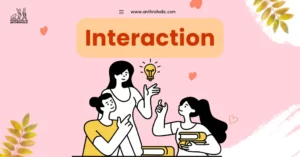AI Answer Evaluation Platform Live Now. Try Free Answer Evaluation Now
Indus Valley Civilization
The Indus Valley Civilization (IVC), one of the world’s oldest civilizations, thrived in the Bronze Age (2600-1900 BCE) in what is now modern-day Pakistan and northwestern India. Anthropologists and Archaeologists explore the multifaceted aspects of the civilization, such as urban planning, social structure, trade, religion, and more, and examines recent developments in our understanding of the IVC.

Geography and Urban Planning
Location and Extent
The IVC encompassed an area of approximately 1.25 million km² [1]. Major sites include Harappa, Mohenjo-Daro, Dholavira, and Rakhigarhi, stretching across the Indus River basin.
Table 1: Major Sites of the Indus Valley Civilization
| Site | Location |
|---|---|
| Harappa | Punjab, Pakistan |
| Mohenjo-Daro | Sindh, Pakistan |
| Dholavira | Gujarat, India |
| Rakhigarhi | Haryana, India |
Urban Architecture
The cities were marked by unprecedented urban planning, with a grid-like pattern, standardized bricks, and advanced drainage systems [2]. Structures like the Great Bath in Mohenjo-Daro exhibit the ingenuity of the era.
Social Structure and Economy
Society
The social structure appears to be non-hierarchical, lacking clear evidence of royal or priestly class dominance. Artifacts and seals suggest a collective administration, but the evidence remains inconclusive [3].
Economy and Trade
The IVC engaged in widespread trade with Mesopotamia and other regions. The existence of uniform weights and measures indicates a complex economic system, involving commodities like beads, pottery, and metal goods [4].
Table 2: Key Commodities and Trade Routes
| Commodity | Trade Routes |
|---|---|
| Beads | Mesopotamia, Persia |
| Pottery | Oman, Bahrain |
| Metals | Central Asia |
Religion and Culture
Religious Beliefs
The religion of the IVC remains largely enigmatic. Iconography from seals and terracotta figurines suggests a blend of animistic and fertility beliefs, possibly leading to early forms of Hinduism [5].
Language and Script
The Indus script remains undeciphered. Despite numerous attempts, the script’s complexity and the lack of bilingual texts have hampered efforts to unlock its secrets [6].
Recent Updates
Recent excavations, such as at Rakhigarhi, have added new layers to our understanding of the IVC. These findings include evidence of rice cultivation [7], the discovery of new sites [8], and advancements in DNA research that shed light on the genetic makeup of the population [9].
Archaeological Discoveries
Harappan and Mohenjo-Daro
Harappan and Mohenjo-Daro are two of the most studied sites. Recent excavations have provided insights into urban planning, technological advancements, and a sophisticated lifestyle.
Dholavira
Dholavira stands out for its unique water conservation systems and massive architectural structures, reflecting a highly organized society.
Rakhigarhi
Recent discoveries at Rakhigarhi have led to extensive DNA studies, offering intriguing insights into population genetics and migration patterns of the Indus Valley people.
Technology and Innovations
Metallurgy
The IVC is known for advanced metallurgy, working with materials such as copper, bronze, lead, and tin. This skill led to the creation of various tools, ornaments, and even seals for trade and administration.
Pottery and Crafts
The pottery of the IVC is characterized by artistic excellence, with intricate designs and standardized manufacturing processes. Various styles and types of pottery reveal cultural complexity and trade relationships.
Decline of the Indus Valley Civilization
Environmental Factors
Some scholars believe that climate change, including shifts in monsoon patterns, may have contributed to the decline of the IVC.
Economic and Social Factors
Trade disruption and potential social upheaval could have played a role in the decline. The exact reasons remain a subject of ongoing debate.
Aryan Invasion Theory
This theory has been largely discredited, but it was once proposed that an invasion by Indo-Aryan tribes might have led to the decline of the IVC. Current evidence does not support this view.
Indus Valley Civilization in Modern Culture
Influence on Contemporary Art and Literature
The IVC has inspired numerous works of art, literature, and even films. This fascination reflects the enduring legacy and enigma that the civilization presents.
Educational Initiatives
Modern educational initiatives, especially in India and Pakistan, have sought to integrate knowledge about the IVC into curricula, fostering a deeper connection to this shared heritage.
Conclusion
The Indus Valley Civilization, with its rich history, advanced technology, social structure, and complex urban planning, continues to fascinate scholars and the general public. Continued research and interdisciplinary approaches are likely to shed further light on this enigmatic civilization. The exploration of the IVC not only enriches our understanding of the past but also contributes to cultural appreciation in the present.
[1] Possehl, G. L. (2002). The Indus Civilization: A Contemporary Perspective. https://rowman.com/ISBN/9780759101722/The-Indus-Civilization-A-Contemporary-Perspective
[2] Kenoyer, J. M. (1998). Ancient Cities of the Indus Valley Civilization.
[3] McIntosh, J. (2008). The Ancient Indus Valley: New Perspectives.
[4] Ratnagar, S. (2004). Trading Encounters: From the Euphrates to the Indus in the Bronze Age.
[5] Coningham, R., & Young, R. (2015). The Archaeology of South Asia: From the Indus to Asoka.
[6] Farmer, S., et al. (2004). The Collapse of the Indus-Script Thesis.
[7] Fuller, D. Q., et al. (2016). “Prospects of Protohistoric Archaeobotany in South Asia.”
[8] Singh, A. K. (2019). “Recent Archaeological Discoveries in the Indian Subcontinent.”
[9] Narasimhan, V. et al. (2019). “Genomic Formation of South and Central Asia.”




